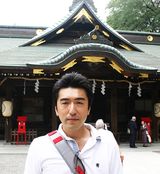"What Does 'Shikinen Sengu' Mean to the Japanese? - Hidetoshi Tōjō's Column No. 15"
- 2024/01/10 23:28

"What Does 'Shikinen Sengu' Mean to the Japanese?
- Hidetoshi Tōjō's Column No. 15"
"Significance of Shikinen Sengu: Ise Grand Shrine and Izumo Grand Shrine"
This year holds special importance in the Shinto shrine industry as both the Ise Grand Shrine and Izumo Grand Shrine, considered particularly vital in the shrine community, are undergoing Shikinen Sengu, a periodic relocation and reconstruction of the main shrine.
In Ise, this is referred to as "Shikinen Sengu," meaning the "scheduled relocation" of the main shrine. This event occurs approximately every 20 years, symbolizing renewal and cyclical life patterns. Similarly, Izumo Grand Shrine is undergoing the "Honden Senza-sai" or the "Main Hall Relocation Ceremony," also known as the "Great Shikinen Sengu," after a hiatus of 60 years. Notably, both shrines are experiencing Shikinen Sengu in the same year, a historical first.
The reasons for conducting Shikinen Sengu are not entirely clear, but one common understanding is to preserve and pass down shrine construction techniques and traditions. With the diminishing demand for shrine carpenters, this practice helps ensure the continuity of these skills.
For the Ise Grand Shrine, there are various theories, including intentionally lowering the lifespan of the main shrine to maintain its freshness. The shrine's unique construction without using foundation stones for pillars is cited as a deliberate strategy to reduce its longevity.
Other explanations involve the influence of the "Sangen Kuyō" (Three Elements and Nine Divisions) calendar, which calculates energy flows. Some theories suggest that imposing the burden of Shikinen Sengu on devotees helps anchor their faith and elevates their consciousness. Despite the seemingly dubious psychological aspects, it is undeniable that Shikinen Sengu involves substantial financial investment. The budget for Ise Grand Shrine's Shikinen Sengu is estimated to exceed 55 billion yen, considering the entire shrine complex.
The Shikinen Sengu at Ise Grand Shrine is scheduled for October 2nd. If you have the opportunity, consider visiting both shrines this year. It might provide insights into something deeply valued by a Japanese individual.

(Shrine Person Operator, Representative of Culture J, Ltd., Hidetoshi Tojo)
Hidetoshi Tojo was born in 1972 in Saitama Prefecture and is the representative director of Culture J, Ltd. He is the direct descendant of Hideki Tojo and the 18th head of the family. Exploring a unique social welfare model in Japan, he turned his attention to the presence of shrines and Shinto. Advocating for cultural tourism through shrines, he aims to revitalize new local communities and cultural entertainment.
1: "What is True Culture? Understanding Japan"
2: Real Meaning of Foundation Day of Japan as a Nation
3: There is a great leap forward after overcoming a crisis.
4: Let's return to the spirit of "Mottainai"!
5: "Understanding Japan's Obon Festival"
6: "The Pink Book for Fulfilling the Whims of Adult Women"
7: "The cultural roots of Japanese New Year
8:Rekindling the Spirit of Herbivore Men Through Taiko Drumming?
9: "Publishing 'Proof of Japanese Identity' - Column by Hidetoshi Tojo, No. 10"
10: "Publishing 'Proof of the Japanese' - Part 2 - Hidetoshi Tojo's Serial Column No. 11"
11: "For the Japanese, What Does 'Work' Mean? - Hidetoshi Tojo's Serial Column No. 12"
12: Learn from the keen insights of our predecessors – Hidetoshi Tojo's Column No.13
13: Japanese Language Quirks: Logographic and Phonetic Characters
14: "What Does 'Shikinen Sengu' Mean to the Japanese? - Hidetoshi Tōjō's Column No. 15"
15: Cultivation Required in a Global Society? - Column by Hidetoshi Tojo, No.16"
16: "Publication of 'Shrine Tourism'!! Hidetoshi Tojo's Serial Column No. 17"